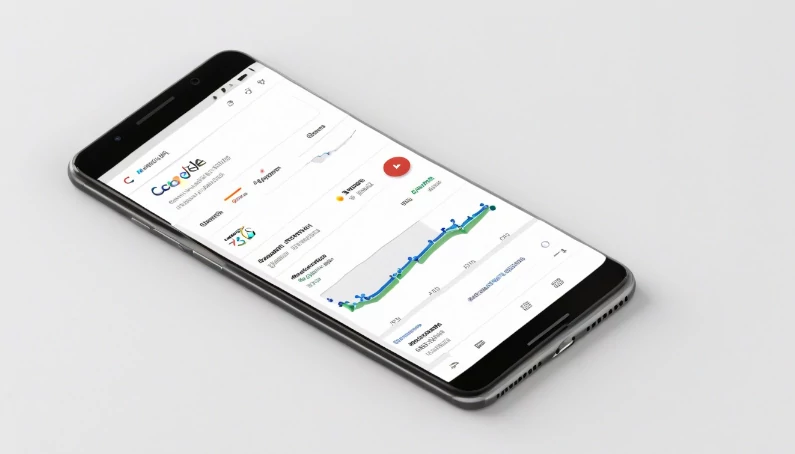Table of Contents
Definition of Anchor Text and its role in Web navigation.
Anchor text is the highlighted or clickable portion of text in a hyperlink. It may consist of a single word, a sentence, or even an image. Its main function is to provide users with a clear indication of the content or theme of the page to which the link is intended.
Role of Anchor Text in Web Navigation:
Facilitates Navigation: Anchor text provides users with an intuitive way to move between different pages or sections of a website. Well-crafted anchor text clearly communicates the link’s destiny, thereby enhancing the user experience.
Indicate the Link’s Content: Anchor text should be accurate and descriptive with respect to the content of the target page. This helps users understand what to expect when they click on the link.
Influences Search Engine Indexing: Search engines use anchor text to understand what the linked page is about. Therefore, anchor text plays a crucial role in search engine optimization. Strategic use of keywords in links can help improve a page’s ranking in search results.
Contributes to Site Structure: Anchor text is critical to the structure of a website. Well-positioned internal links with appropriate anchor text help organize and logically connect content within the site.
Supports Brand Awareness: In the case of links to external sites, anchor text can be used to promote the brand. Consistent use of the brand name in links contributes to online brand awareness and recognition.
In short, anchor text plays an essential role in facilitating web navigation, search engine indexing, and overall optimization of the structure and visibility of an online site.
Importance of anchor text for usability and user experience.
Anchor text plays a crucial role in usability and user experience on a website. Careful management of anchor text can significantly improve user navigation and understanding of content. Here’s why they are important:
Clarity in Navigation: Anchor text should be clear and descriptive to clearly indicate the destination of the link. This helps users understand what they expect to find when they click on a link.
User Orientation: Well-formulated anchor text provides guidance to users about the context and theme of the linked page. This is especially useful when navigating within complex sites with multiple sections and pages.
Accessibility for Screen Readers and Assistive Devices: Meaningful anchor text improves accessibility for screen readers and other assistive devices. Well-chosen anchor text also provides useful information to those navigating via assistive technologies.
Reducing User Frustration: Confusing or ambiguous anchor text can lead to misunderstandings and user frustration. A clear indication of the link content reduces the chance of erroneous clicks and improves the overall experience.
Natural Reading Flow: Anchor text that is well integrated into the context of the text contributes to a natural reading flow. Avoiding interruptions and incorporating links organically helps users follow the narrative smoothly.
Increased Engagement: Strategic use of anchor text can encourage users to explore the website further, increasing engagement. Relevant, well-placed links invite users to delve deeper into related content.
Impact on SEO and Search: Anchor text affects search engine indexing. Excellent anchor text management can help improve site visibility in search results.
Brand Consistency: Consistent use of the brand name in anchor text contributes to online brand consistency. This is especially important for brand awareness and user trust.
In summary, attention to anchor text is critical to creating a positive browsing experience by improving the clarity, consistency, and overall accessibility of your website.
What is an Anchor Text: Detailed explanation of what an anchor text is.
An anchor text, or anchor text, is a clickable portion of text within a hyperlink. This highlighted text is what users can click on to be redirected to another web page, another section of the same page, or an online resource. Anchor text plays a key role in indexing search engines and directing users to the destination of the link.
Here is a more detailed explanation of what anchor text is:
Clickable text: The key element of anchor text is that it constitutes the clickable text within a link. It can be a single word, a sentence or even an image, depending on how it has been implemented in the HTML code.
Hypertext Link (Link): The anchor text is always associated with a hyperlink, represented by the HTML element . This element delineates the beginning and end of the link, and the href attribute specifies the destination URL.
Role in Search Engine Indexing: Search engines use anchor text to understand the content of the destination page. Well formulated anchor text can provide search engine algorithms with valuable information about the subject matter of the linked page, thus influencing its indexation in search results.
Improved Usability: The use of meaningful anchor text improves website usability. It gives users a clear and intuitive indication of the content they are about to access when they click on the link.
Internal and External Links: Anchor text can be used for both internal links (within the same website) and external links (leading to pages on other sites). This offers smoother navigation between different sections of a site or to online resources.
Variety of Types: Anchor text can take a variety of formats, including:
- Keyword-Rich: Containing keywords relevant to the content of the landing page.
- Branding: Using the brand name to promote brand awareness.
- Descriptive Texts: Providing a description of the content of the linked page.
Accessibility: Well-chosen anchor text improves accessibility for users with screen readers and assistive devices, enabling them to better understand the nature of the link.
In conclusion, anchor text is an essential component in the structure of the web and plays a key role in search engine optimisation and the overall user experience when surfing online.
Deepening: types of anchor text: keywords, brands, descriptive texts, etc.
Anchor texts can be divided into various types according to their content and purpose. Here are some common types of anchor text:
Keyword-Rich: They contain specific keywords that reflect the content of the landing page.
For example:
<a href="https://www.example.com">SEO best practices</a>
Branding: They use the brand name as an anchor text, promoting brand awareness.
For example:
<a href="https://www.brand.com">BRAND</a>
Descriptive Texts: They provide a clear description of the content of the linked page. These anchor texts are more detailed and informative.
For example:
<a href="https://www.example.com/products">Discover our latest products</a>
Generic: Use generic words such as ‘click here’ or ‘read more’ as anchor text. However, it is often advisable to use more descriptive anchor text to improve usability and search engine indexing.
Long Tail: They incorporate longer and more specific key phrases. These can be useful for attracting a more targeted audience.
For example:
<a href="https://www.example.com/seo-guides-for-beginners">Seo Guides for beginners</a>
Naked Links (URL as Anchor Text): Use the URL of the target page as anchor text.
For example:
<a href="https://www.example.com">https://www.example.com</a>
Image as Anchor Text: The image itself serves as a link, and the alternative text (alt attribute) of the image can be considered as anchor text.
For example:
<a href="https://www.example.com"><img src="image.jpg" alt="Image description"></a>
CTA (Call-to-Action): They contain text designed to encourage a specific action on the part of the user.
For example:
<a href="https://www.example.com/buy-now">Buy Now!</a>
It is important to vary the anchor text used, maintaining a natural balance and avoiding the excessive use of keywords or practices that may be perceived as manipulative by search engines. A diverse strategy will help improve usability, user experience and search engine optimisation.
Role of Anchor Texts in Search Engine Optimisation (SEO):
How anchor texts influence search engine indexing.
Anchor texts influence search engine indexing as they provide search algorithms with key information about the content of the target page. Search engines use anchor text to understand the thematic context of a page and determine the relevance of that page to certain keywords. Here is how anchor texts influence indexation:
Keywords and Relevance: Anchor text containing keywords relevant to the content of the linked page tells search engines what that page is about. This correspondence between the keywords in the anchor text and the content of the page helps improve relevance for indexing purposes.
Co-Citation Concept: Anchor texts act as ‘co-quotations’ or ‘co-occurrences’ of keywords. When an anchor text contains a specific keyword, search engines associate that keyword with the target page, thus increasing its relevance for that specific keyword.
Link Juice and Authority: The quality of anchor text and links can influence the transmission of ‘link juice’ (authority) from one page to another. Links with relevant and quality anchor text can help improve the authority of the target page in the eyes of search engines.
Differentiation and Naturalness: A variety of anchor texts that naturally reflect the diversity of site content is viewed positively by search engines. This diversification suggests an organic and non-manipulative strategy, improving the reliability and quality of the site in the eyes of search engines.
Avoid Excessive Optimisation Practices: Excessive use of keyword-optimised anchor text may be penalised by search engines, as it could be considered a manipulative practice. It is important to maintain a natural approach that is consistent with the language and context of the content.
Context and Semantics: anchor texts provide additional semantic context. Search engines analyse the surrounding text and context of the page to fully understand the meaning of the anchor text and its relationship to the linked page.
In general, a strategy of using anchor text that reflects natural diversity, thematic relevance and an organic approach will help improve a website’s overall indexation in search engines. The key is to create anchor text that provides informative value to users and is congruent with the overall quality of the content.
Best practices for using anchor text to improve SEO.
The strategic use of anchor text is crucial for improving the SEO (Search Engine Optimisation) of your website. Here are some best practices to follow:
Choose Relevant Anchor Texts: Use anchor text that is directly related to the content of the landing page. Choose relevant keywords and accurately reflect the theme of the page.
Natural Variation: Diversify anchor texts so that they are not all the same. Natural variety helps avoid penalisation by search engines and suggests authenticity.
Avoid Over-optimisation: Avoid excessive use of keywords in anchor text. Over-optimisation can be interpreted as manipulation and could lead to penalisation by search engines.
Descriptive and Informative Texts: Prefer anchor texts that provide a clear description of the content of the linked page. These texts are useful for both users and search engines.
Strategic Positioning: Position anchor texts strategically within the content. Link important keywords and place anchor texts in places in the text where they make sense from a contextual point of view.
Relevant Internal Links: Use relevant internal links to connect to related pages within your site. This improves the structure of your site and provides a better browsing experience.
Quality External Links: When creating external links, look for high quality sources and use relevant anchor text. Linking to reliable and authoritative sites can improve your credibility in the eyes of search engines.
Consistency with Content: Make sure that the anchor text is congruent with the content of the linked page. Consistency between anchor text and content increases the credibility of your page.
Use CTAs (Call-to-Action): Where appropriate, use anchor text as calls to action. For example, “Download now”, “Find out more” or “Sign up”.
Monitor and Update: Regularly monitor your links and the anchor texts used. Update or optimise when necessary, especially if there are changes in your SEO goals.
Rel=nofollow attribute: When appropriate, use the “rel=nofollow” attribute for links that you do not want search engines to follow, e.g. advertising links.
Use Alternative Text for Images: If you are using images as links, be sure to provide descriptive and informative alternative text (alt attribute) that reflects the destination of the link.
By following these best practices, you can create a strategy for using anchor text that contributes positively to your SEO, improving the visibility and relevance of your website in search engines.
Keyword Anchor text:
How to use keywords in your anchor texts effectively.
The effective use of keywords in anchor text is a crucial aspect of improving the SEO of your website. Follow these guidelines to use keywords in your anchor text effectively:
Keyword Research: Conduct a thorough search for keywords relevant to your content. Identify the keywords that best represent the theme of your landing page.
Natural Variety: Create a natural variety in the anchor text used. Avoid repetitive use of the same exact keyword, as this may seem spammy to search engines.
Long Tail Keywords: Integrate long tail keywords into your anchor text whenever possible. Longer, more specific keywords can attract a more targeted audience.
Content Context: Make sure that the keywords in your anchor text are in tune with the context of your content. Anchor text should flow naturally in the context of the surrounding sentence.
Strategic Placement: Place keywords strategically, preferably at the beginning of the anchor text. This is especially important for screen readers and search engines.
Avoid Excessive Repetition: Avoid excessive use of the same keywords in anchor text within a page or your site. Diversification is important for a balanced link building strategy.
Use Synonyms and Variants: Integrate synonyms and variants of your keywords into your anchor text. This offers semantic variety and can broaden the reach of your searches.
Use Keyword-based CTAs: If possible, incorporate your keywords into calls to action (CTAs) in your anchor text. For example, “Find out more about the best “.
Internal Links and Target Keywords: When creating internal links, use anchor text that reflects the target keywords. This helps to create a consistent and relevant link structure.
External Links and Content Consistency: When creating external links, make sure the anchor text is consistent with the content of the landing page. It contributes to the credibility and relevance of the link.
Performance Monitoring: Monitor the performance of keywords in your anchor text through analytical tools. Analyses which keywords are most effective in generating traffic and conversions.
A/B testing (if appropriate): If possible, perform A/B tests to evaluate the effectiveness of different types of anchor text. This can help you optimise your strategy over time.
Maintaining the balance between search engine optimisation and providing a high-quality user experience is crucial. Use keywords in your anchor text organically and consistently to maximise the positive impacts on your website’s SEO.
Beware of over-optimisation.
Attention to over-optimisation is crucial when it comes to using anchor text and implementing search engine optimisation (SEO) strategies. Over-optimisation can be detrimental and lead to penalisation by search engines. That is why it is important to maintain a balanced approach:
Natural Diversification: Avoid overuse of exact keywords or key phrases in anchor text. Natural diversification, including variants and synonyms, is essential to appear organic and authentic in the eyes of search engines.
Variation in Anchor Text Types: Do not focus exclusively on one type of anchor text (e.g. exact keywords). Vary between keywords, descriptive text, branding and other anchor text types so that your strategy appears natural and well-balanced.
Avoid Excessive Repetition: Avoid repeating the same or very similar anchor texts within the same page or across the entire site. Excessive repetitions may be interpreted as an attempt to manipulate search results.
Context and Consistency: Make sure anchor texts are relevant to the context of the surrounding text and the content of the landing page. The inclusion of keywords should flow naturally within the text.
Organic Link Building: Build links organically and authentically. Avoid aggressive or manipulative link building practices that could be perceived as violating search engine guidelines.
Natural Links and Citations: Search for natural links and citations of your site from other users and sites. Consistency in your brand name and direct links to your site will contribute to a perception of authenticity.
Performance Analysis: Monitor the performance of anchor texts through analytical tools. If you see signs of over-optimization or limited variety, make changes to balance the strategy.
Follow Search Engine Guidelines: Familiarize yourself with search engine guidelines, such as those of Google. Make sure you comply with the recommendations to avoid penalties.
A/B Testing and Continuous Optimization: If possible, run A/B tests to evaluate the effectiveness of different anchor text strategies. Continuous optimization is essential to adapt to evolving search engine algorithms.
User Focus: Always prioritize the user experience. Anchor texts need to be useful and informative for users, not just optimized for search engines.
Maintaining the balance between search engine optimization and creating high-quality content for users is critical to an effective long-term SEO strategy.
Branding Anchor Text: Importance of connecting to your brand.
Linking to your brand through anchor text is an important element for several reasons that positively influence both brand visibility and your website’s SEO. Here are some of the reasons why it’s important to connect to your brand:
Brand Awareness: Using your brand name as anchor text directly helps drive brand awareness. Users who click on links with your brand name are directly exposed to your corporate identity.
Online Consistency: Connecting to your brand helps keep your brand consistent online. Maintaining consistent brand name usage in links helps establish a cohesive digital identity.
Trust and Reliability: Users tend to have more trust in links that include the brand name. Linking directly to your brand can increase the perception of trustworthiness and authenticity of your content.
Differentiation from Competitors: Connecting to your brand clearly distinguishes your company from competitors. It helps consolidate your position in the market and make you recognizable in the eyes of users.
Facilitates Brand Search: Users specifically searching for your brand can benefit from direct links to your site. This simplifies navigation and allows them to easily find the information they want.
SEO and Signal Consistency: From an SEO perspective, linking directly to your brand provides clear signals to search engines about your relevance and authenticity. This is especially important when trying to establish your brand’s online presence.
Balanced Link Building: Balanced use of anchor text that includes your brand name contributes to a well-balanced link building strategy. This is especially useful to avoid appearing spammy or manipulative in the eyes of search engines.
Intuitive Navigation: Users find it more intuitive to click direct brand links when searching for specific information about a company. This improves the user experience and facilitates navigation.
Promoting Campaigns and Initiatives: When running marketing campaigns or promoting specific initiatives, linking directly to the brand helps raise awareness of the campaign and provides a central point of reference.
External Links and Citations: When other sites link to your brand, it can contribute to your online authority. Consistency in your brand name across external links is key to ensuring recognition and consistency.
In summary, linking directly to your brand through anchor text is a key practice for promoting brand awareness, improving user trust, and providing clear signals to search engines about the relevance and authenticity of your website.
How to create anchor texts that improve brand awareness.
Creating anchor text that improves brand awareness is a key strategy for promoting your company’s visibility and recognition. Here are some tips on how to create effective anchor text for this purpose:
Use Brand Name: Use your brand name as anchor text. This is the most direct and immediate way to make your brand known to users.
<a href="https://www.yourbrand.com">Your Brand</a>
Integrate the Brand Name into Descriptive Phrases: Include the brand name in descriptive phrases that reflect the brand’s values or identity. This contributes to a more complete presentation of the brand.
<a href="https://www.yourbrand.com">Explore the Quality of [Your Brand]</a>
Brand Name Calls to Action: Use calls to action that incorporate your brand name. This can be effective for driving specific interactions or encouraging users to engage with your brand.
<a href="https://www.yourbrand.com/buy">Discover [Your Brand] and Buy Today</a>
Promote Brand Events or Campaigns: Link to the brand name when promoting specific brand events, campaigns, or initiatives. This helps create direct associations between the event and the brand.
<a href="https://www.yourbrand.com/special-discount">Participate in the [Your Brand] Event</a>
Embed Brand in Relevant Links: Embed your brand name in links that are directly related to your company’s main products, services or areas of business.
<a href="https://www.yourbrand.com/products">Discover New Arrivals from [Your Brand]</a>
Links to Key Content: Link to your brand name when sharing key content like your home page, “About Us” page, or other crucial sections of your site.
<a href="https://www.yourbrand.com/about-us">The History of [Your Brand]</a>
Consistent Links Across All Platforms: Make sure your brand name is linked consistently across all online platforms, including social media, blogs, and other web resources.
Alt Text for Brand Images: If you are using brand images as links, be sure to include alt text (attribute alt) that reflects the brand name.
<a href="https://www.yourbrand.com"><img src="logo.png" alt="[Your Brand]"></a>
Maintain Consistency Over Time: Maintain consistency in how you present your brand name in anchor texts over time. This consistency helps consolidate the brand’s identity.
Educate Users About Brand Identity: Use anchor texts to educate users about brand identity. Link to pages that tell the story of the brand, company values and other distinctive aspects.
Creating anchor text that effectively complements your brand name requires a combination of consistency, creativity, and context-relevance. This strategy will help improve brand awareness and make your name more recognizable online.
Descriptive Texts:
Using clear and meaningful descriptions as anchor text.
Using clear, meaningful descriptions as anchor text is an effective approach to improving the usability of your website and giving users an immediate understanding of where the link will take them. Furthermore, this practice can also be advantageous from an SEO point of view, as it offers search engines more precise indications on the topic of the landing page. Here are some guidelines for using clear descriptions as anchor text:
Be Descriptive: Provide a clear and accurate description of the landing page content. This helps users understand what to expect when they click on the link.
<a href="https://www.example.com/seo-guide">Read our complete guide on SEO for beginners</a>
Use Natural Phrases: Structure your anchor text so that it flows naturally within the context of the surrounding sentence. Avoid forcing descriptions to maintain fluent language.
<p>Find out more about how to optimise your site for search engines by reading the <a href="https://www.example.com/seo-guide">SEO guide for beginners</a>.</p>
Link to Relevant Content: Make sure your description directly relates to the content of your landing page. This improves the user experience and reduces the likelihood of users abandoning the page.
<a href="https://www.example.com/recipes">Explore our delicious recipes for an unforgettable dinner</a>
Encourage Action: Where appropriate, use descriptions that encourage the user to take a specific action, such as “Read,” “Discover,” or “Buy.”
<a href="https://www.example.com/special-offers">Discover our special offers of the month</a>
Avoid Generic Texts: Avoid generic anchor texts like “Click here” or “Read more”. Instead, provide a description that gives users a clear indication of the content.
<a href="https://www.example.com/news">Discover the latest news in the world of technology</a>
Use Synonyms and Variants: Integrate synonyms or variations of relevant keywords. This offers semantic variety and can appeal to a wider audience.
<a href="https://www.example.com/technology">Exploring the latest trends in the world of technology</a>
Alt Text for Images: If your anchor text consists of an image, be sure to provide descriptive alt text.
<a href="https://www.example.com"><img src="image.jpg" alt="Explore our spring collection"></a>
Match with Content: Make sure your anchor text is in perfect harmony with the content of the landing page. This improves consistency and transparency for users.
<a href="https://www.example.com/services">Discover our financial advisory services</a>
Using clear descriptions as anchor text not only benefits users but also contributes to better indexing by search engines, thus improving the overall visibility of your website.
Improving user experience through descriptive texts.
Improving the user experience through descriptive texts is crucial to providing users with clear information, facilitating navigation, and promoting positive interaction with your website. Here’s how you can use descriptive texts to optimize user experience:
Clarity and Understandability: Make sure descriptive texts are clear and understandable. Avoid complex technical language when unnecessary and use short, concise sentences.
Intuitive Navigation: Use descriptive text to guide users through your website. Clearly describe the sections of the site, navigation menus and links to make navigation intuitive.
Clear Product Descriptions: If you have an online store or feature products, provide clear, detailed descriptions. Includes important information such as features, sizes, colors and prices.
Effective Call-to-Action: Use engaging descriptive texts for calls-to-action (CTAs). For example, “Learn more,” “Buy now,” or “Sign up” provide clear directions on what to do next.
Feedback and Instructions: Use descriptive texts to provide immediate feedback and clear instructions. For example, it informs users when a form has been successfully submitted or explains how to proceed in a checkout process.
Image and Graphic Descriptions: Add descriptive texts to images and graphics. This is especially important for visually impaired users who use screen readers.
Contact Information: If you have contact information on the site, make sure it is well described. Provide clear instructions on how users can reach you via phone, email or contact form.
Explanatory Sections: Use descriptive texts to explain the different sections of your site. For example, if you have an FAQ section, clearly describe the type of information users can find there.
Personalization and Relevance: Personalize descriptive texts based on user preferences and behavior. For example, a user who has already made a purchase might see personalized CTAs like “See more similar products”.
Stories and Narrative Content: Use descriptive text to tell stories or provide narrative content. This can engage users and make the experience more memorable.
Guide to Using the Site: If you have particular features or tools on the site, create clear guides on how to use them. This is especially useful for new users or for advanced features.
Adaptation to Different Platforms: Make sure your descriptive texts are adapted to different platforms, including mobile devices. Maintain brevity without sacrificing the importance of the information.
Using descriptive texts effectively is a key practice for ensuring a positive user experience. The clarity and relevance of the information contributes greatly to the usability of your website.
Best Practices for Anchor Text
Balance variety of anchor text types.
Balancing the variety of anchor text types is an important practice to ensure a balanced approach to link building and improve search engine optimization (SEO).
Let’s remember the guidelines for obtaining a balanced mix of anchor text types:
Exact Keywords: Use exact keywords as anchor text when it is relevant and natural within the context of your content. However, avoid excessive use, as it may appear spammy to search engines.
Long Tail Keywords: Integrate long tail keywords into your anchor texts. These are longer, more specific sentences that can attract a more targeted audience.
Descriptive Texts: Use descriptive texts that reflect the content of the landing page. This provides clear context for both users and search engines.
Branding: Include your brand name as anchor text. This promotes brand awareness and contributes to online consistency.
Generic Anchor Texts: Use generic anchor texts like “Click here” or “Read more” only when appropriate. However, avoid basing your entire link strategy on these generic terms.
Mixed Texts: Create a mix of anchor text types within your content. This semantic variety appears more natural in the eyes of search engines.
Link to Brand Name: When creating links, link to your brand name. This helps consolidate the brand’s presence online.
Links to Internal Pages: Use anchor text to link to relevant internal pages on your site. This helps improve the structure of your site and offers a richer browsing experience.
External Links and Citations: When creating external links, use a mix of anchor text, including relevant keywords and descriptive text. It will help improve your online authority.
Avoid Over-Optimization: Avoid overusing the same keywords in your anchor texts. Diversification is key to avoiding penalties from search engines.
Monitoring and Analysis: Regularly monitor the performance of your links and anchor texts used. Analyze the data to identify any areas where you need to adjust your strategy.
Relevance to Content: Make sure anchor texts are cohesive with the surrounding content. They must be organically integrated into the flow of the text.
Balancing the variety of anchor text types is critical to creating a natural and authentic link building strategy. A balanced approach not only benefits SEO, but also provides a cohesive and informative user experience.
Avoid unethical or spammy link building practices.
Avoiding unethical or spammy link building practices is essential to maintaining the credibility of your website and to avoid penalties from search engines. Here are some practices you should avoid:
Buying Links: Avoid purchasing links from link services or networks. Google and other search engines consider these practices against their guidelines and may penalize your site.
Exchange of Irrelevant Links: Avoid the indiscriminate exchange of links with irrelevant or low-quality sites. Links should be built naturally and based on the relevance of the content.
Spam Comments with Links: Avoid leaving spam comments on blogs or forums just to get a link. This practice is harmful and can damage your online reputation.
Links from Irrelevant or Low-Quality Content: Try to get links only from sites with high-quality, relevant content. Links from low-quality or unrelated sites can hurt your SEO.
Hidden or Disguised Links: Do not use hidden or disguised text or links to deceive search engines. This practice is considered a violation of the guidelines.
Excessive or Low-Level Guest Posting: Avoid posting low-quality or irrelevant content in exchange for links. Guest posting must be authentic and contributory.
Link Farms: Avoid participating in link farms, which are groups of sites that link to each other artificially to manipulate search engines.
Creating Satellite Sites: Avoid creating satellite sites or sites aimed solely at creating links to your main site. This practice is considered manipulative.
Social Media Manipulation: Don’t manipulate social media to gain links. Using fake accounts or automating social media interactions can be counterproductive.
Irrelevant Links in Footer or Sidebar: Avoid inserting links in the footer or sidebar that are not relevant to the content of the page. Links should be positioned naturally and coherently with the context.
Excessive Anchor Text Optimization: Avoid using exactly matching anchor texts excessively. Natural diversification is preferable for a balanced link building strategy.
Excessive Repetition of the Same Links: Do not excessively repeat the same links within your site. A variety of links is preferable for a balanced link structure.
Not Abiding by Search Engine Guidelines: Familiarize yourself with search engine guidelines, such as those of Google, and make sure you follow them strictly to avoid penalties.
The key to effective link building is consistency, authenticity and a focus on creating value for users. By avoiding unethical link building practices or spam, you protect your online reputation and contribute to a positive, long-lasting online presence.
Using Anchor Text in Internal and External Links:
How anchor texts contribute to the structure of your site.
Anchor texts play a significant role in the structure of your site, influencing both user experience and search engine optimization (SEO). Here’s how they contribute to the overall structure of your site:
Internal Navigation: Anchor texts are used to create links between different pages of your site. These internal links contribute to efficient internal navigation, helping users easily move from one section to another.
<a href="/products">Discover our products</a>
Information Architecture: Anchor texts reflect the structure and information architecture of your site. By using descriptive texts, you can clearly indicate the content and theme of each page.
<a href="/blog">Read the latest news in our blog</a>
Relevance Indicators: Anchor texts provide users and search engines with indications about the relevance of the content of the landing page. Keywords or descriptive phrases contribute to more precise indexing.
<a href="/seo-guide">SEO Guide for Beginners</a>
Authority Distribution: Authority Distribution: Authority distribution is influenced by anchor texts. Pages with well-optimized links and anchor text can transfer authority and relevance to linked pages.
<a href="/contact-us">Contact us for more information</a>
Deep Links: Anchor texts are used to create deep links, linking directly to specific pages within the site structure. This facilitates direct access to relevant content.
<a href="/products/category-1">Explore category 1</a>
SEO and Indexing: The careful use of keywords in your anchor texts contributes to indexing by search engines. Search algorithms consider anchor texts as important signals to determine the relevance of pages.
<a href="/services">Discover our consulting services</a>
Category Structure: Anchor texts can be used to define and communicate the category structure of your site. This is useful when you have a wide range of products or services organized into different categories.
<a href="/products/category-2">Show category 2</a>
User Experience (UX): Anchor texts contribute to the user experience, intuitively guiding them through your site. Descriptive and relevant texts facilitate understanding and navigation.
<a href="/who-we-are">Learn more about our history and mission</a>
Coherence Signals: Maintaining consistency in anchor texts contributes to a clear and organized structure. Users and search engines appreciate a cohesive and logical presentation of information.
<a href="/contacts">Contact us for assistance</a>
Links to Key Pages: Anchor texts can be used to link to key pages on your site, such as the home page or strategic landing pages.
<a href="/">Back to home page</a>
Ensuring that your anchor texts are relevant, descriptive, and well-structured is essential to creating a website structure that promotes usability and optimizes your overall online presence. Careful planning of anchor texts will contribute to clear navigation and a positive experience for users and search engines.
External links and how they affect your site’s reputation.
External links, or backlinks, are links from other websites and play a significant role in the evaluation of your site’s reputation by search engines and users. Here’s how external links impact your site’s reputation:
Authority and Credibility: External links from high-quality, authoritative sites increase the credibility of your site in the eyes of search engines and users. Being associated with reputable sources improves your online reputation.
Indication of Relevance: External links from sites relevant to your industry or topic indicate to search engines that your site is an important resource in the field. This can improve your site’s position on search results pages.
Search Quality and Content: Search engines use external links as indicators of the quality and relevance of your content. Links from relevant sites suggest that your content is useful and informative.
Contextual and Relevant Links: External links should be contextually relevant to the content of your site. Links from pages with similar content to yours contribute to a positive reputation.
Diversity of Sources: A mix of external links from different sources is preferable. A variety of links from different sites indicates a more robust and well-established online reputation.
Natural and Spontaneous Links: External links should be obtained in a natural and spontaneous way, based on the quality of your content. Avoid aggressive link building practices that could be considered manipulative.
Evaluation of User Engagement: External links can be considered indicators of user engagement. If your content is shared and linked from other sites, it can be interpreted as a sign of value to users.
Social Sharing and Virality: External links obtained through social sharing and the virality of your content can improve your online reputation. These links indicate that your site is relevant and appreciated by users.
Links from High Authority Pages: External links from pages with a high level of authority have a more significant impact on your site’s reputation. Getting links from sites with a strong online presence is beneficial.
Link Analysis and Monitoring: Regularly monitor and analyze external links to ensure they are quality and relevant. Harmful or irrelevant links can negatively impact your reputation.
Consistency and Progression Over Time: Consistency in link building over time is crucial. The steady progression of external links can indicate an ongoing commitment to creating quality content.
Contributing to the Online Community: Actively participate in your online community, offering helpful contributions and resources. This can lead to external links from other community members, thus improving your online reputation.
In conclusion, external links have a significant impact on your site’s reputation. Focus on creating high-quality content, actively participate in your community, and gain links ethically and naturally to improve your online reputation.
The best anchor text analysis tools.
There are several tools that can help you analyze your website’s anchor texts, providing you with valuable information about your link building strategy and the structure of your internal and external links. Here are some suggestions for tools you might consider:
Google Search Console: Google Search Console is a free tool provided by Google that gives you information about how your site is performing in search results. Within Google Search Console, you can explore the links to your site and get details on the anchor texts used.
Ahrefs: Ahrefs is a comprehensive backlink analysis tool that offers detailed information about anchor texts. You can monitor your site’s backlink profile, analyze anchor text distribution, and get data on referring domains, keywords, and more.
Moz Link Explorer: Moz offers a tool called Link Explorer that lets you explore your site’s link profile. You can analyze anchor texts used in incoming and outgoing links, as well as gain insight into link quality.
Semrush: Semrush is a comprehensive SEO analysis tool that includes features for examining anchor texts. You can monitor your inbound links, analyze anchor text distribution, and compare your link building strategy with that of your competitors.
Majestic: Majestic is another popular tool for backlink analysis. It offers detailed data about your site’s link profile, including anchor text, trust flow, and other relevance metrics.
SEMrush Backlink Analytics: In addition to the general functionality of Semrush, the Backlink Analytics section allows you to explore the anchor texts of incoming links. You can get a detailed overview of anchor text distribution.
OpenLinkProfiler: OpenLinkProfiler is a free tool that provides information about a site’s backlink profile, including anchor texts. It can be useful for a quick analysis of link sources and texts used.
Linkody: Linkody is a backlink monitoring tool that allows you to track your external links. Provides details on the anchor texts used in incoming links and alerts you to any changes.
Monitoraggio del Web Mention: Web mention tracking tools, like Brand24 or Mention, can help you track online mentions of your brand. These tools can reveal new links and provide information about the anchor texts used.
CognitiveSEO: CognitiveSEO offers backlink and anchor text analysis capabilities. You can get a detailed analysis of anchor text distribution and associated metrics.
When using these tools, consider regularly analyzing the profile of your backlinks and anchor texts to ensure your link building strategy is effective and in line with SEO best practices.
Resources to learn more about anchor text optimization.
To further learn about anchor text optimization and gain insights into effective strategies, I recommend you explore the following resources:
Official Google Documentation: Read Google’s official documentation on link building guidelines: Linking Guidelines. This provides clear information on best practices and what you should avoid.
Google Webmaster Central Blog: The Google Webmaster Central Blog is a useful resource for staying up to date on the latest developments in the world of search and getting advice directly from Google teams.
Moz Blog: The Moz Blog offers a wide range of articles on search engine optimization, including topics related to anchor text, link building strategies, and SEO best practices.
Ahrefs Blog: The Ahrefs Blog is packed with informative SEO resources, including in-depth articles on backlink analysis and link building tactics.
SEMrush Blog: The SEMrush Blog offers a series of articles on site optimization, including tips on how to manage anchor text effectively.
Search Engine Land: Search Engine Land is an industry-leading resource providing news, analysis, and in-depth guides on search and search engine optimization.
Backlinko di Brian Dean: Backlinko is the blog of Brian Dean, known for his in-depth articles on SEO and link building. You can find specific resources on anchor texts and link building.
CognitiveSEO Blog: CognitiveSEO Blog offers informative articles on SEO, including insights into anchor text and backlink management.
Neil Patel’s Blog: Neil Patel’s Blog is a great resource for learning about digital marketing, including advanced SEO concepts and link building strategies.
HubSpot SEO Blog: HubSpot SEO Blog provides detailed information about SEO and how to improve your site’s online visibility.
Yoast SEO Blog: Yoast SEO Blog offers practical SEO advice and specific resources on anchor text management.
Exploring these resources will give you an in-depth overview of best practices for anchor text optimization and help you develop an effective strategy for improving your site’s visibility on search engines.
Conclusions:
Summary of best practices.
Here is a summary of best practices for optimizing anchor texts and improving your link building strategy:
Relevance and Consistency: Make sure your anchor texts are relevant to the content of your landing page. Maintain consistency in your theme for better understanding by users and search engines.
Anchor Text Diversity: Balance the variety of anchor text types, including exact keywords, long tail keywords, descriptive texts, branded anchor texts, and generic anchor texts. Avoid over-optimization.
Descriptive Text: Use descriptive texts that reflect the content of the landing page. This provides context and helps users understand what to expect when they click on the link.
Branding and Site Name: Include your brand name or site name as anchor text. This contributes to brand consistency online.
Quality Internal Links: Use anchor text to link to your site’s internal pages strategically. This improves the structure of your site and provides smoother navigation.
Relevant External Links: When creating external links, make sure they are from relevant and authoritative sources. Linking to high-quality sites improves your online reputation.
Avoid Link Purchases: Avoid purchasing links, as this practice is against search engine guidelines and can lead to penalties.
Monitoring and Analysis: Regularly monitor your external and internal links using analytical tools to ensure an effective link building strategy.
Social Sharing and Virality: Try to create content that is shared across social media and goes viral. This can lead to spontaneous links from other sites.
Deep Links: Use deep links to link directly to specific, relevant pages on your site. This improves the user experience.
Consistency Over Time: Maintain consistency in link building over time. Consistent progression can improve your online reputation.
Online Community Participation: Actively participate in your online community by making helpful contributions. This can lead to spontaneous links and improve your online reputation.
By following these practices, you can develop a link building strategy that not only improves your search engine visibility but also positively contributes to the user experience and overall reputation of your website.
How to implement the knowledge acquired to improve your websites.
And here we are at the end of this long article. I hope the information you’ve learned about how to optimize anchor texts has sparked interest and inspiration to improve your website. Now it’s time to put this knowledge into practice to take your online presence to the next level.
Here are some steps you can follow:
Analyze your Anchor Texts: Use the recommended tools to examine the anchor texts currently in use on your site. This will give you a clear overview of your link building strategy.
Update Existing Anchor Texts: If you see opportunities for improvement, consider updating existing anchor texts to make them more relevant and descriptive. Make sure you maintain balance and diversification.
Create New Strategic Connections: Identify new opportunities to strategically create internal and external connections. Link to relevant pages that add value to the user experience.
Promote Your Content: Share your content on relevant social media and forums. Social sharing can increase visibility and lead to spontaneous new connections.
Actively Participate: Get involved in your online community. Leave informative comments on blogs and forums, and contribute helpful resources. This can generate natural links and improve your online reputation.
Monitor Performance: Use analytics tools to regularly monitor the performance of your links. Remain flexible and open to adjustments based on your results.
Remember that implementing these practices takes time and consistency. Be patient and see how the changes positively affect your online presence over time.
Improve your website, provide a better user experience, and let your brand shine online!









